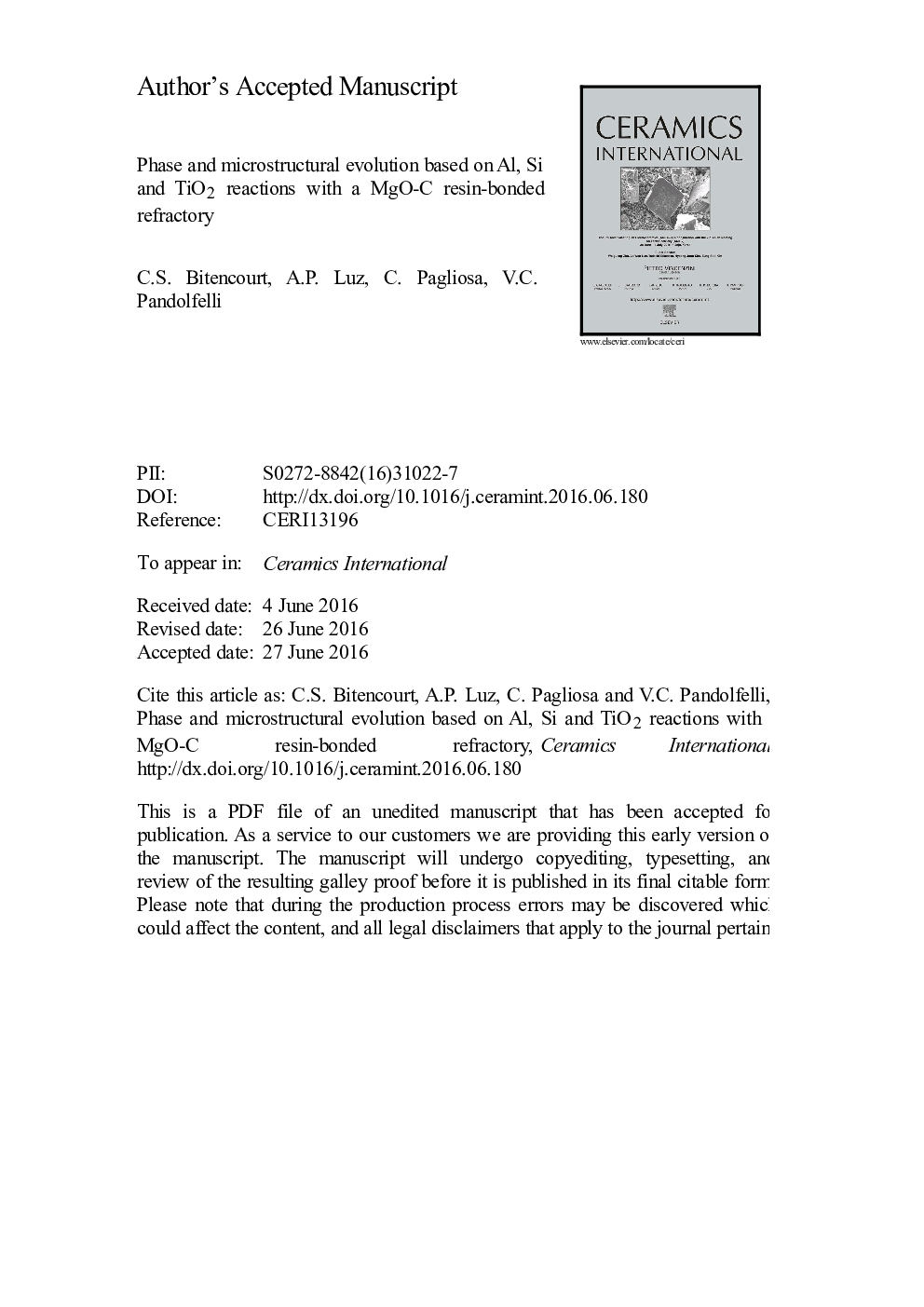| Article ID | Journal | Published Year | Pages | File Type |
|---|---|---|---|---|
| 5438690 | Ceramics International | 2016 | 36 Pages |
Abstract
Adding carbon to refractory products (i.e. MgO-C) usually results in unique properties that allow these materials to attain the performance level required for the steel-making process. Nevertheless, C oxidation is still a big concern and using antioxidant additives has become an important alternative to prevent carbon loss and induce the generation of further compounds (carbides, nitrides, etc.) in the fired microstructure, which will affect the overall thermo-mechanical behavior of the refractories. Aiming to better understand the main phase transformations derived from the interaction of polymeric binders with antioxidants and other refractory components in the MgO-C system, this work addresses the evaluation of mixtures containing novolak resin + antioxidants (Al, Si, and/or TiO2) and: (i) fine MgO, (ii) ferrocene (catalyst for carbon graphitization), and (iii) coal-tar-based binder. X-ray diffraction, scanning electron microscopy (SEM) and energy-dispersive X-ray spectroscopy (EDS) analyses were carried out in order to identify the main phases comprising the fired samples (kept at 1000 °C and 1400 °C for 5 h in a reducing environment) and observe their morphology and distribution in the resultant microstructure. Based on the attained results, a great variety of whiskers with different shapes, dimensions and distributions were also observed on the fractured surface of the prepared samples containing antioxidants. Furthermore, not only the carbon graphitization, but also the presence of MgO and other binders (Carbores® P) affected the phase evolution at a high temperature, which highlights the complexity of phase transformations and the many likely interactions derived from the combination of various raw materials.
Related Topics
Physical Sciences and Engineering
Materials Science
Ceramics and Composites
Authors
C.S. Bitencourt, A.P. Luz, C. Pagliosa, V.C. Pandolfelli,
